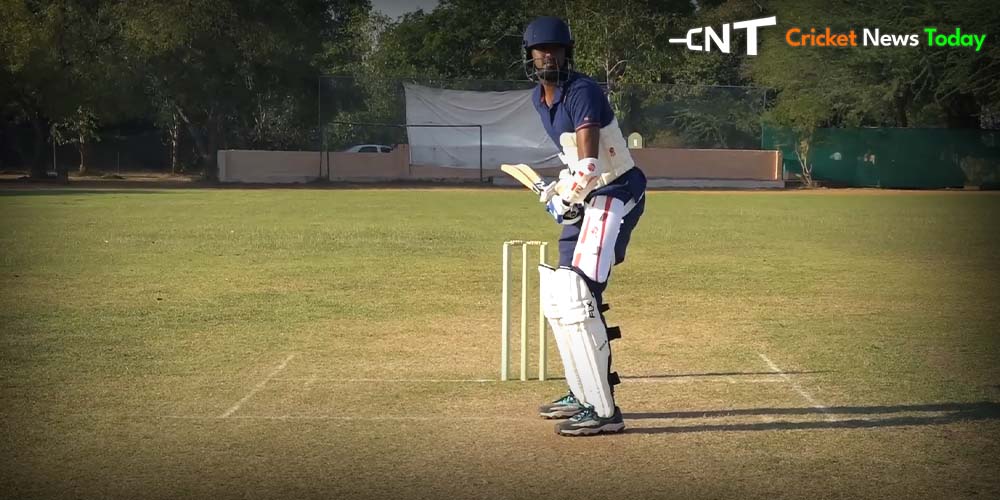Why are Cricket Guards your Best Friends on the Pitch?
No matter how good of a player you are, there’s nothing you can do when calamity strikes you on the field!
For instance, a speeding ball may hit a player on the arm leading to nasty bruises and injuries; a player might fall to the ground and injure his knee while attempting to make runs; and a fielder might intentionally dive and slide on the field while trying to stop a six.
All these instances are usual occurrences on a field, a part and parcel of the game. Hence, protective Cricket Guards act as necessary pieces of equipment to avoid unfortunate damage to the player’s body.
History of Cricket Guards

Cricket is believed to have originated in the 16th century in South East England.
In its early days, cricket was not nearly as fast-paced as it is now.
It was a leisurely game played on sheep-grazed land.
Naturally, cricket guards and protective gear did not exist at the time.
As cricket developed into a full-fledged sport, the level of expertise and sportsmanship increased. Gradually, foundational rules and regulations were laid down, but nothing was said and done about protective gear.
A helmet, the most important piece of protective equipment, was introduced only a few decades in the past, in the 1970s. When cricketer Dennis Amiss wore a helmet on the field for the first time, he was booed and ridiculed by the crowd.
Imagine facing a West Indies fast bowler on the field and you’re not wearing any cricket guards! What’s the worst that could happen? You could get hit by a ball. Big deal right?

If you think so, you’re gravely mistaken. Cricketers George Summers of Nottinghamshire, Abdul Aziz from Pakistan, Raman Lamba from India and Ian Folley of Lancashire, all tragically lost their lives due to sports injuries sustained during cricket matches.
Finally, after witnessing these tragic incidents on the field, the importance of protective cricket guards became apparent to players and audiences alike.
Types of Cricket Guards

Cricket guards are basically life saviours for cricket players. Different types of guards are used to shield different body parts. These are:
Abdomen Gaurds:
Also known as Box or L guards, the primary purpose of abdomen guards is to shield the sensitive crotch area against fastballs and other impacts in the game.
Cricket balls are made from hard materials like cork and leather which is why abdomen guards are especially crucial.
These guards protect the vulnerable lower abdomen of players, especially batsmen and wicketkeepers. The guards are hollow and pear-shaped with a sturdy exterior.
Factors to consider when buying Abdomen Guards:
- Abdomen guards should be of high quality to provide maximum protection to the groin. Falling short of investing open-handedly in this gear is a bad idea.
- They should have elasticated straps that allow customized adjustments.
- They should fit well inside the batting or wicketkeeping trousers of a cricketer.
- They should be purchased keeping in mind the height and weight of the player.
- They should be crafted using high-density plastic.
- They should be cushioned and fuzzy on the inside and strong and sturdy on the inside.
Chest Guards:
Chest injuries can pose significantly serious health risks, potentially damaging the kidneys, ribs and chest muscles. Situations such as being struck by a speeding cricket ball or experiencing a face-down fall can heighten this risk.
To safeguard yourself from painful deliveries and injuries to your chest muscles, chest guards are an excellent solution.
When selecting a chest guard, it’s advisable to choose one that features a sturdy exterior for protection while ensuring a soft, sweat-absorbent, comfortable lining on the inside for maximum comfort during play.
Arm Guards:
High-impact injuries to the arms can cause strains, bruises, contusions and even dislocations.
To safeguard your arms against these injuries, arms guards are an excellent solution. They keep your forearms well-shielded from fastballs, falls and nippy deliveries.
Thigh Guards:
Thigh Guards are a must for cricketers. They are designed to shield the inner and outer thighs of cricketers. These guards support the thigh, absorbing shocks and vibrations.
Knee Guards:
Knee guards are designed to cover the knee area against possible injuries sustained during low deliveries, and diving and sliding on the field.
Good knee guards have a sturdy exterior and a cushioned curve on the inside.
The knee guard is a piece of crucial equipment for every cricketer but especially for wicketkeepers and close fielders.
Also Read: Cricket Pads: The Secret Weapon of Pro Cricketers
The Psychological Edge
Apart from saving cricketers from on-field accidents, Cricket guards also provide significant psychological benefits.
Knowing that they are protected against potential injuries allows players to focus on their game rather than worrying about getting hurt.
This confidence translates into bolder decision-making and more aggressive play, complementing overall performance.
This psychological edge can be just as crucial as technical skills in achieving success in cricket.
Conclusion
Whether you’re facing fast bowlers, spinners, or merely practising in the net, being fully prepared with cricket guards on is always a good idea.
If you’re dreaming of becoming a seasoned cricket player, focusing on your health and safety on the field goes a long way.
Next time you step on a pitch ready to score fours and sixes, remember to equip yourselves with cricket guards like a knight donning their armour before the battle.











